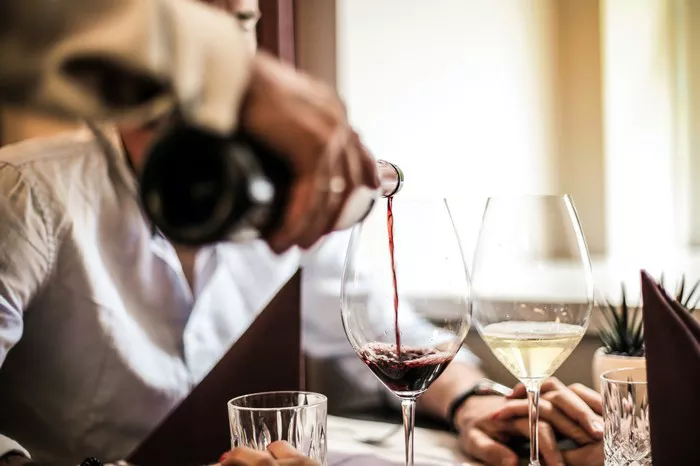Chardonnay, one of the most renowned white wine varietals, has long been celebrated for its versatility and ability to express a wide range of flavors and characteristics. One of the many debates surrounding Chardonnay is the ideal serving temperature. Should Chardonnay be served cold or at a slightly warmer temperature? This question has sparked discussions among wine enthusiasts and professionals for years. In this in-depth guide, we will explore the nuances of serving Chardonnay, the factors that influence its serving temperature, and the art of finding the perfect balance to unlock the wine’s true potential. By the end of this article, you’ll have a comprehensive understanding of the ideal serving temperature for Chardonnay.
I. Understanding Chardonnay
Chardonnay is a grape varietal known for its adaptability to various winemaking techniques and climates. It is grown in regions around the world, producing a diverse array of Chardonnay wines, from crisp and unoaked to rich and buttery. Chardonnay grapes are used to create wines that can range from light and refreshing to full-bodied and complex, each with distinct flavor profiles.
II. Serving Temperature Basics
Serving temperature plays a crucial role in how wine is perceived and enjoyed. Temperature affects the wine’s aroma, taste, and mouthfeel. Serving wine too cold can mask its nuances while serving it too warm can make it feel heavy and less refreshing. Finding the right serving temperature is essential to appreciate Chardonnay’s full potential.
III. The Cold Side of Chardonnay
Refreshing and Crisp Chardonnay: Chardonnays with a fresh, crisp, and zesty profile, often produced without oak aging, are typically best served well-chilled. The temperature range for these wines is around 45-50°F (7-10°C). This cooler serving temperature enhances the bright acidity and citrusy notes, making for a refreshing and thirst-quenching experience.
Chilled Wine’s Benefits: Serving Chardonnay on the colder side can highlight the wine’s fruitiness and provide a pleasant contrast to the warmer weather. It is an excellent choice for outdoor gatherings and picnics and as an aperitif.
Examples: Young, unoaked Chardonnays from regions like Chablis in France or Chardonnay-based sparkling wines like Champagne are prime examples of wines that shine when served cold.
IV. The Warm Side of Chardonnay
Complex and Full-Bodied Chardonnay: Chardonnays that have undergone oak aging or malolactic fermentation often possess a richer and more complex flavor profile. These wines benefit from being served slightly warmer, in the range of 50-55°F (10-13°C). This temperature allows the wine to express its full spectrum of aromas and flavors.
The Benefits of Warmer Service: Serving Chardonnay on the warmer side can reveal the wine’s creamy texture, vanilla and buttery notes, and the depth of its fruit character. It pairs exceptionally well with heartier dishes, such as roasted poultry, creamy pastas, or lobster.
Examples: Chardonnay from regions like California, Burgundy, or Australian Chardonnays known for their oak influence and complexity are ideal candidates for serving at a slightly warmer temperature.
V. Chardonnay’s Spectrum
Chardonnay’s remarkable adaptability means it falls on a spectrum of styles, from unoaked and refreshing to full-bodied and complex. The wine’s character is influenced by factors such as the region of origin, winemaking techniques, and aging processes. Understanding these variables is essential to determining the perfect serving temperature for a specific Chardonnay.
VI. Factors Influencing Serving Temperature
Winemaking Style: Chardonnay can be vinified in various styles, from stainless steel tanks (resulting in a crisper wine) to oak barrels (creating a richer and creamier wine). The choice of winemaking style often informs the ideal serving temperature.
Age: The age of the Chardonnay also plays a role. Younger Chardonnays may benefit from cooler service to accentuate their freshness, while aged Chardonnays may reveal more complexity and character when served slightly warmer.
Region: Chardonnay’s terroir and regional variations can significantly impact its flavor profile. Cooler-climate Chardonnays often exhibit more citrus and mineral notes, while those from warmer regions may have riper fruit and oak characteristics, which can influence the ideal serving temperature.
Personal Preference: Ultimately, personal taste is a significant factor. Some individuals may prefer a crisper, cooler Chardonnay, while others may enjoy the complexities that emerge at a slightly warmer temperature.
VII. Balancing Act
Finding the perfect balance in serving Chardonnay is a delicate art. The goal is to ensure the wine is enjoyed at its best, revealing its true character without any extremes in temperature that might diminish the experience.
Chilling Chardonnay: If you’re unsure, starting with a cooler temperature (around 45-50°F or 7-10°C) is a safe bet for most Chardonnays. This temperature range enhances acidity and freshness, making it an excellent choice for warm weather or lighter fare.
Gradual Warming: For Chardonnays that fall on the richer and more complex end of the spectrum, start with a cooler temperature and allow the wine to gradually warm in the glass. This gradual warming can help reveal the wine’s full potential.
Temperature Control: Wine enthusiasts can invest in wine fridges or temperature-controlled wine cabinets to ensure their Chardonnay is served at the perfect temperature every time.
Conclusion
Chardonnay, with its diverse styles and flavor profiles, offers a world of possibilities when it comes to serving temperature. The decision of whether Chardonnay should be served cold or at a slightly warmer temperature depends on the specific wine, personal preference, and the occasion. As you continue to explore the world of Chardonnay, remember that the art of serving this beloved varietal is a dynamic and nuanced journey.


